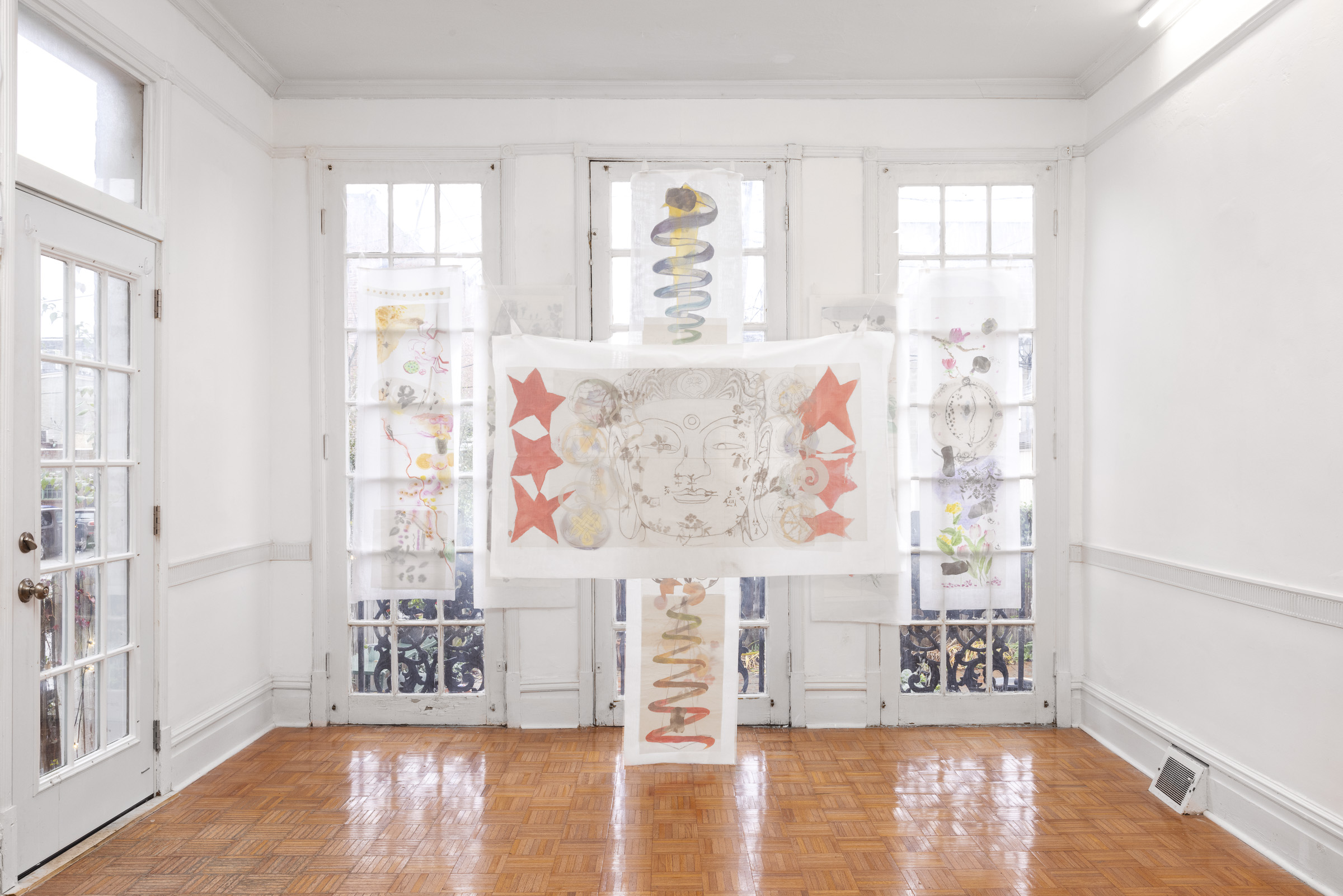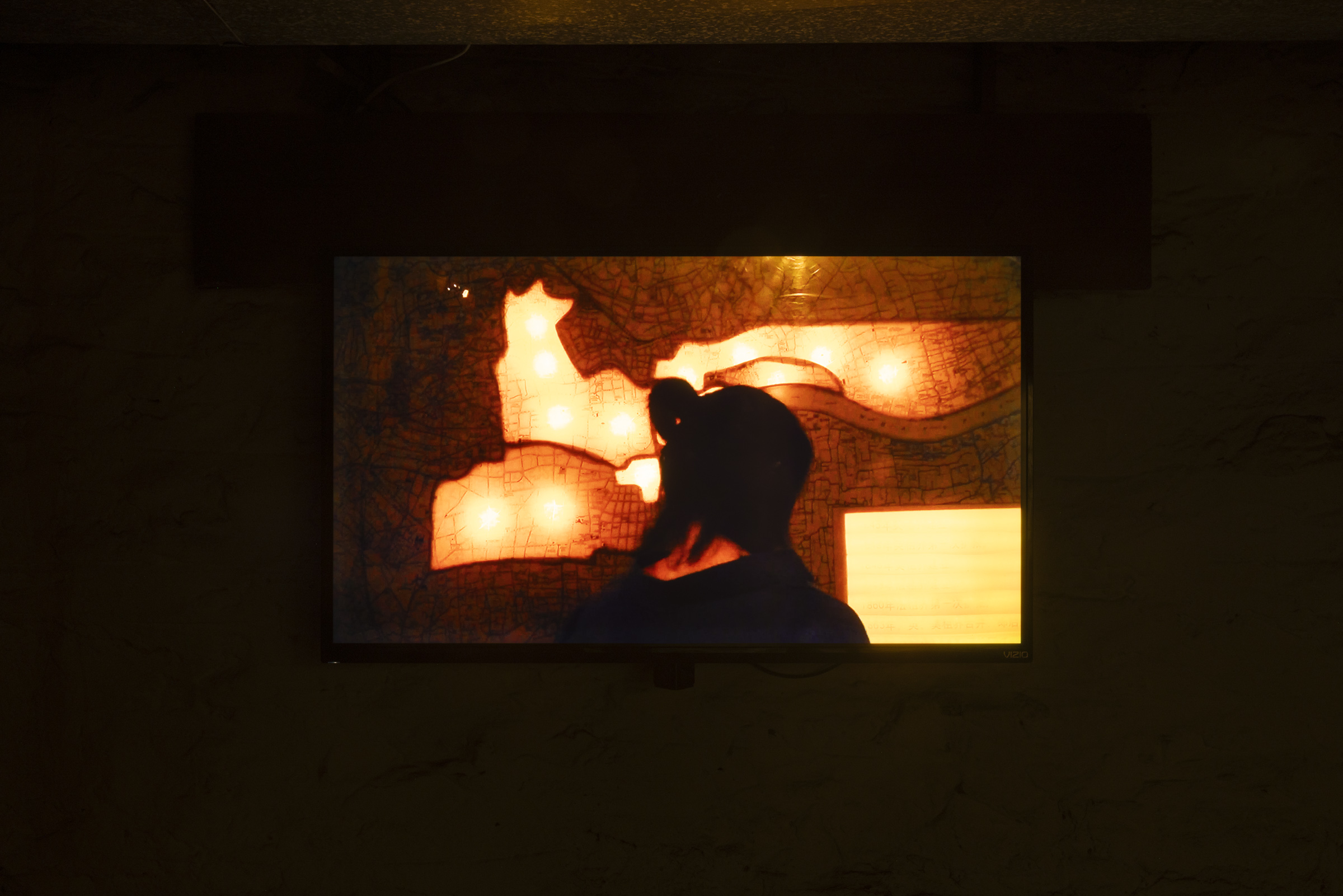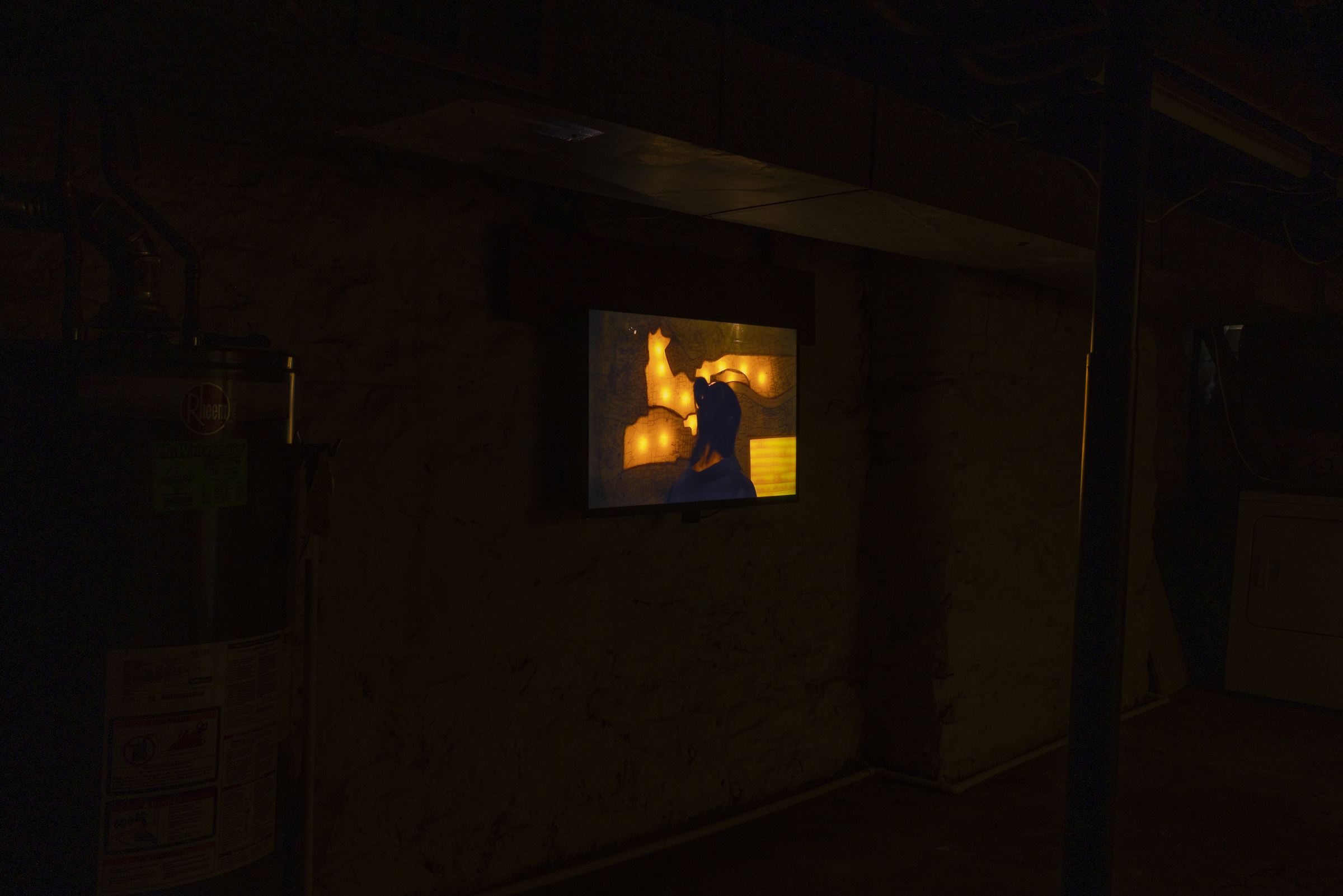ROMANCE
Emilia Wang
Heaven Potato
Nov 21–Jan 26, 2025
If you put a cut piece of potato on the ground, it'll create more potatoes. Transcendence implies going beyond the physical and material, typically understood with a religious connotation, or, in our rat race of a world, to mean exceeding “ordinariness.” But what if we befriended the rats and cared for the potatoes? What if true transcendence can be found in the ordinary, on the ground, in the roots of things? Or, somewhere between the rooted and untethered, as Emilia Wang writes: In between the sky and ground, as you float, you enter into a cross-section of time. As you travel through it, you may observe that it is stuffed with frosting, insulation foam, and a bone structure invisible to the untrained eye. This space contains dreams where the future speaks to the present through idioms created by one’s own particular past. Here, future me comes back to find myself where I was not. Each moment is teleologically fraught, insolent against linear logic.
In an installation of washy ink paintings on delicate scroll-like paper, abstract calendars demarcate shifts in Wang’s future predicated on “irrational” ways of measuring time, from the astrological to the personal. Here, the anticipation of what’s possible is “mapped” out in a collage of the everyday. The show’s smaller sculptural miniatures are likewise characterized by soft coverings and lightness met with moments of opacity and reveal. There's all kinds of seeing and not seeing, Wang explains, and then kind of entering into the underground. At times, the exhibition feels like a tiny hope, that we can build a perfect little nest home like birds, and create things for the future–or things that can show us the future–in a kind of prophesying, through the process of making and delving into emotional containers and roots of all kinds: psychological, earthly, social, and familial.
But how do you map a life when so much of it can take place in conditions of displacement and unrootedness? A reflection on diasporic movement in an experimental documentary/travelog of a recent family visit in Japan and China, Wang’s Shadow, Playing (2024), records sentient abstractions of light and shadow and ambient sounds, both human and electronic, as a different sort of measure. In the contents of her dollhouse-like sculptures—blurred by cloth that's slightly translucent yet light illuminates everything––our diminutiveness comes into focus. Even as a dreamy filminess overlays Wang’s work, it’s a willingness to look at shadow sides, and acknowledge the facts of being a body with a limited time, with smallness, and with transience, that we can reach a true understanding of (or acceptance of never understanding) our place relative to the universe, and to each other.
Emilia Wang (b. 1994) is an artist, musician, and writer based in Tokyo, Japan. This is her first gallery solo exhibition in the US. Recent solo exhibitions and projects include Love, A Maior, Viseu, Portugal (2022) and wandering against dominant time (online project), 47 Canal, New York (2021). She has been included group exhibitions at the Hiroshima City Museum of Contemporary Art, Hiroshima, Japan (2024), Hordaland Kunstsenter, Bergen, Norway (2023), and Goethe Institut Tokyo, Japan (2022). She has performed internationally at institutions and venues, such as SculptureCenter, New York, NY, Crystal Bridges Museum of American Art, Bentonville, AR, and Hordaland Kunstsenter, Bergen, Norway.

Installation view, Emilia Wang, Heaven Potato, 2024

Installation view, Emilia Wang, Heaven Potato, 2024

Installation view, Emilia Wang, Heaven Potato, 2024

Cloth Calendar 2, 2024
watercolor and ink on washi paper, polyester linen
61 x 19 in.
Four Mountains, 2024
watercolor and ink on washi paper, leaves, polyester linen
59 x 18 1/2 in.

Cloth Calendar 2 (detail), 2024
watercolor and ink on washi paper, polyester linen
61 x 19 in.

Installation view, Emilia Wang, Heaven Potato, 2024

Buddha (from Longmen Grottos), 2024
watercolor, pencil, and ink on washi paper, polyester linen
36 3/4 x 61 in.

Installation detail, Emilia Wang, Heaven Potato, 2024

Flower Calendar, 2024
watercolor and ink on washi paper, polyester linen
62 1/2 x 18 1/2 in.
Cowrie Clock (Rocks Arising), 2024
62 1/2 x 18 1/2 in.
watercolor and ink on washi paper, polyester linen

Cowrie Clock (Rocks Arising) (detail), 2024
watercolor and ink on washi paper, polyester linen
62 1/2 x 18 1/2 in.

Installation view, Emilia Wang, Heaven Potato, 2024

Installation view, Emilia Wang, Heaven Potato, 2024

City God Dollhouse, 2024
dollhouse, paper, wood, beads, fabric
12 x 22 x 17 in.

City God Dollhouse, 2024
dollhouse, paper, wood, beads, fabric
12 x 22 x 17 in.

Installation view, Emilia Wang, Heaven Potato, 2024

Potato 2 and 3, 2024
utensil organizer, boxes, washi paper, plastic bags, Styrofoam potatoes
2 x 17 1/2 x 12 in.

Potato 2 and 3, 2024
utensil organizer, boxes, washi paper, plastic bags, Styrofoam potatoes
2 x 17 1/2 x 12 in.

Potato 2 and 3, 2024
utensil organizer, boxes, washi paper, plastic bags, Styrofoam potatoes
2 x 17 1/2 x 12 in.

Potato 2 and 3, 2024
utensil organizer, boxes, washi paper, plastic bags, Styrofoam potatoes
2 x 17 1/2 x 12 in.

Potato 2 and 3, 2024
utensil organizer, boxes, washi paper, plastic bags, Styrofoam potatoes
2 x 17 1/2 x 12 in.

Installation view, Emilia Wang, Heaven Potato, 2024

Acorn Bed, 2024
box, toy piano, acorns, fabric, stuffing
7 x 8 x 2 1/4 in.

Acorn Bed, 2024
box, toy piano, acorns, fabric, stuffing
7 x 8 x 2 1/4 in.

Acorn Bed (detail), 2024
box, toy piano, acorns, fabric, stuffing
7 x 8 x 2 1/4 in.

Installation view, Emilia Wang, Heaven Potato, 2024

Potato 1 with Acorns, 2024
box, fabric, Styrofoam potatoes, acorns
6 x 9 x 3 1/2 in.

Potato 1 with Acorns (detail), 2024
box, fabric, Styrofoam potatoes, acorns
6 x 9 x 3 1/2 in.

Potato 1 with Acorns, 2024
box, fabric, Styrofoam potatoes, acorns
6 x 9 x 3 1/2 in.

Shadow, Playing, 2024
digital video with sound
13:57

Shadow, Playing, 2024
digital video with sound
13:57

Shadow, Playing, 2024
digital video with sound
13:57

Shadow, Playing, 2024
digital video with sound
13:57

Shadow, Playing, 2024
digital video with sound
13:57